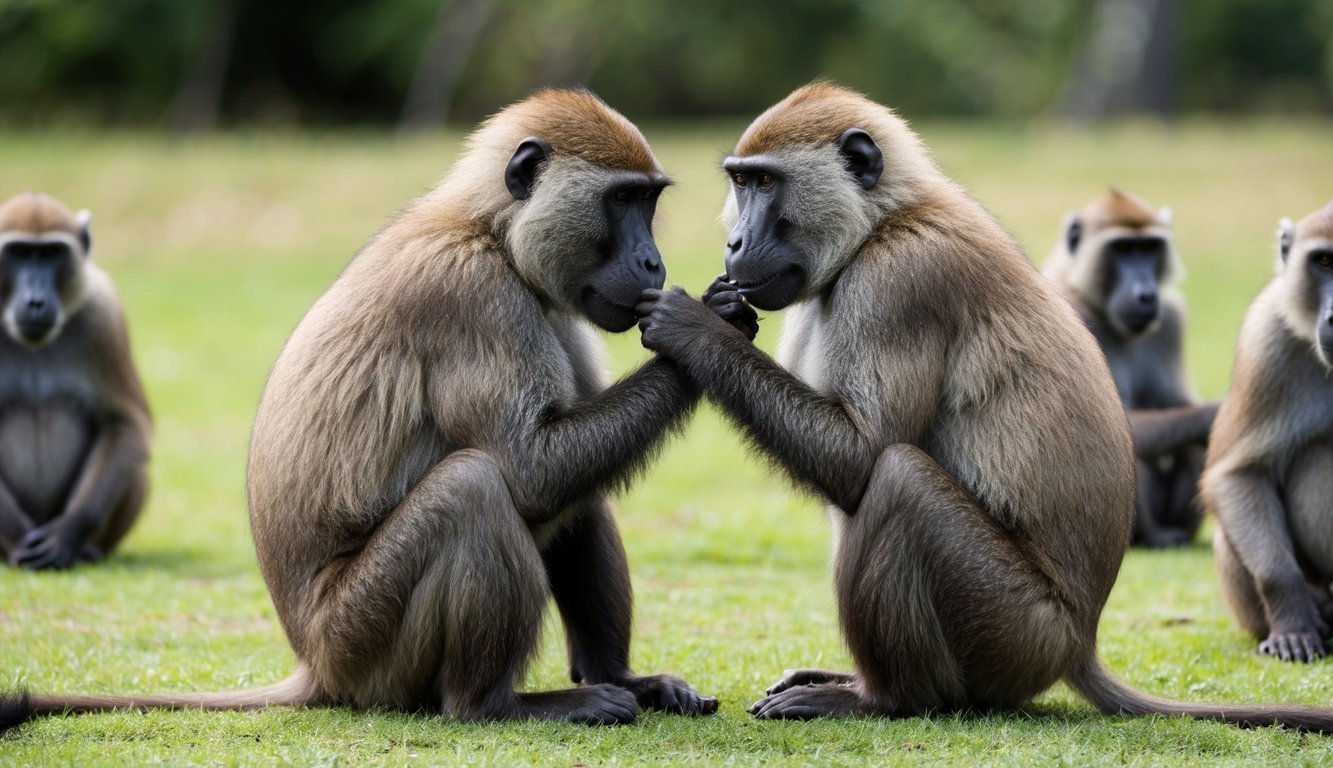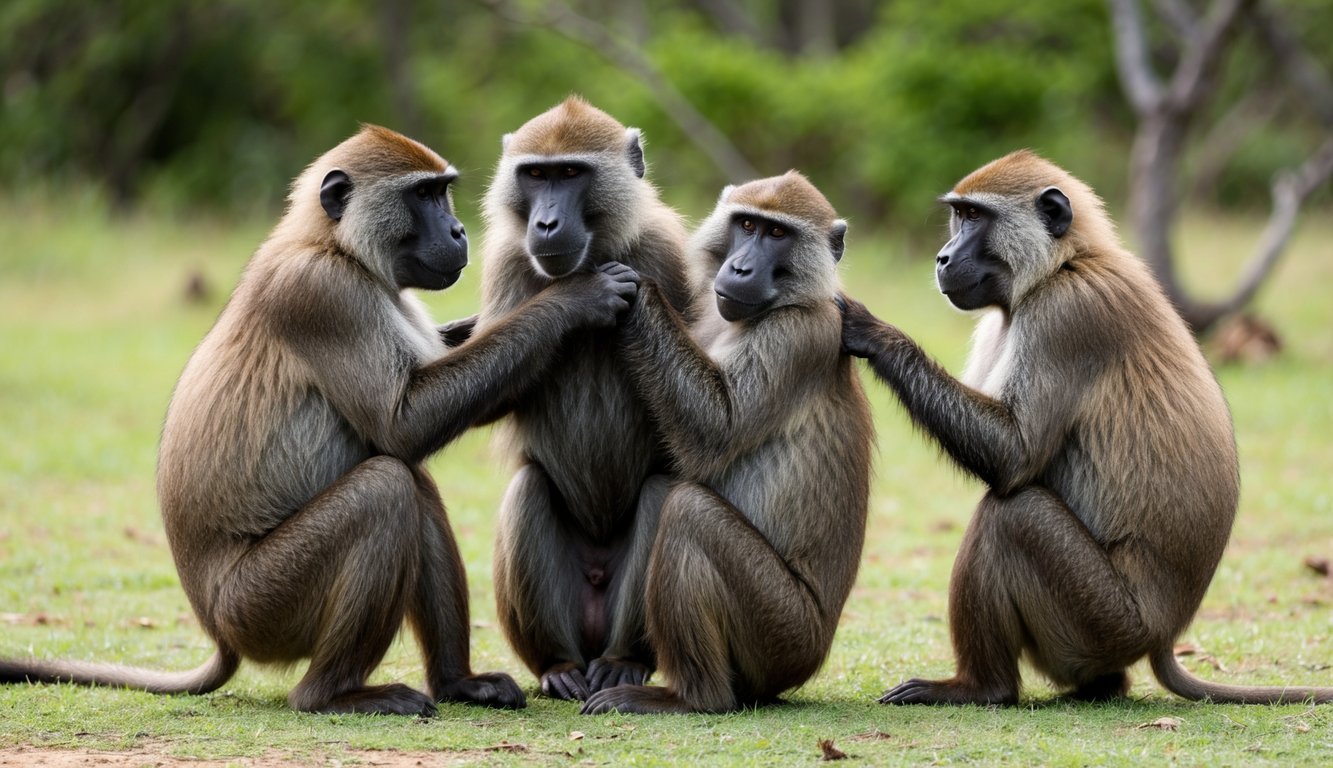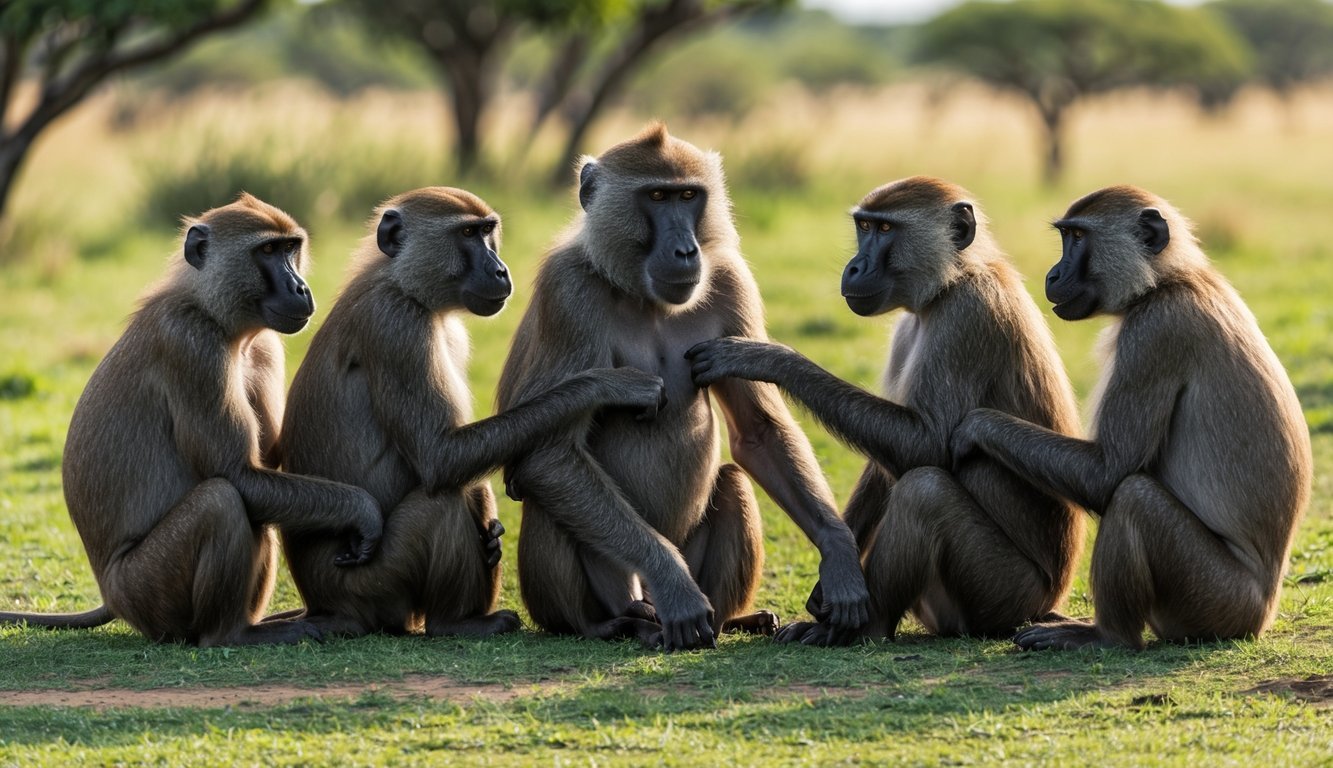PsychNewsDaily Publishers
100 Summit Drive
Burlington, MA, 01803
Telephone: (320) 349-2484
PsychNewsDaily Publishers
100 Summit Drive
Burlington, MA, 01803
Telephone: (320) 349-2484
Baboons thrive in complex social structures where strong relationships, especially between males and females, enhance longevity, reduce stress, and improve reproductive success. Grooming strengthens these bonds.

Baboons live in complex social groups. In these groups, interactions between members play a significant role in their lives. The social structure is defined by a hierarchy that affects relationships and social bonds, especially between male and female baboons. These connections may also influence their longevity.
In baboon groups, a clear hierarchy exists. The highest-ranking male has priority over resources like food and mates. This position allows him to form stronger social bonds, especially with female baboons. These relationships can be valuable for all involved.
Female baboons also form alliances. They can support each other to strengthen their social standing or care for their offspring. The bonds between male and female baboons can lead to mutual benefits. For instance, males may offer protection, while females can provide companionship.
Social ties greatly affect the longevity of male baboons. Those with strong female friendships are more likely to live longer lives. Reliable social connections help reduce stress, which is vital for health.
Research shows that male baboons with close relationships can navigate social challenges better. These bonds may lead to favorable outcomes during conflicts, offering them better chances for survival.

Grooming plays a crucial part in how male baboons form friendships with females. It not only strengthens social bonds but also helps maintain health within the group. This simple act has significant benefits for their relationships and well-being.
Grooming is more than just a way to look good; it builds strong relationships among baboons. When a male grooms a female or vice versa, it shows trust and care. They often spend time grooming each other, which can strengthen their social ties.
These grooming sessions can lead to greater cooperation in other areas. The friendships formed through grooming are often tested in various social situations. Strong bonds may help a male secure more opportunities for mating or support during conflicts.
Another important benefit of grooming is parasite removal. Baboon fur can be a home for unwanted pests, like ticks and fleas. When baboons groom each other, they help get rid of these parasites.
Removing parasites keeps friends healthier. A healthier baboon is likely to live longer and have a better chance of reproduction. This mutual benefit creates a cycle where grooming not only helps friendships but also enhances the overall health of the group.

Male baboons that maintain friendships with female counterparts enjoy several benefits. These relationships can significantly enhance their social stability and welfare. They provide emotional support and can lead to better health and longevity.
Friendships between male baboons and female friends bring important advantages. For one, these relationships can reduce stress. When male baboons have female companions, they often experience less aggression from other males.
In addition, platonic relationships can increase social bonds within a group. This helps create a stable environment, which is vital for their daily survival. Strong friendships may also mean access to protection and resources, as females often have roles in nurturing young.
Friendship impacts health, too. Studies show that male baboons with supportive female friends tend to have lower stress levels, leading to longer lifespans. This supportive dynamic is crucial as social interactions play a significant role in their well-being.
Having female friends can also influence reproductive success for male baboons. These friendships often create stronger connections with females. This can encourage mating opportunities, as females prefer males who are socially adept.
The bond between male and female baboons allows for better cooperation during parenting. When males support their female friends, it enhances the chance of raising healthy offspring. The presence of a reliable male can help female baboons thrive during critical times.
Moreover, males in good platonic relationships tend to be chosen more often by females for mating. This preference stems from their proven capability to foster supportive environments. The benefits of these friendships show that strong social ties are key to reproductive success in male baboons.

Social connections play a crucial role in the lives of baboons. Understanding how social isolation differs from companionship reveals important aspects of their health and well-being.
When male baboons are socially isolated, their health can suffer significantly. These baboons often experience higher stress levels, which can weaken their immune systems.
Isolation may lead to a lack of support during difficult times. Without social bonds, they miss vital interactions that help them manage stress and anxiety. Such stress can contribute to shorter lifespans.
Additionally, socially isolated males may struggle with finding food or protection. They lose the benefits that come with working together, making them more vulnerable in their environments.
Female friendships can greatly enhance the health and longevity of male baboons. Research shows that males who maintain close ties with females experience lower stress levels.
These friendships offer emotional support, helping them cope with life’s challenges. This type of companionship is vital for mental well-being.
Moreover, having female friends can improve access to resources. A male with strong female relationships is more likely to get food or protection, which can directly impact survival rates.

Long-term studies of wild baboons reveal important insights into how social connections impact their lives. Research has shown that male baboons with lifelong bonds to female friends benefit in terms of longevity and social stability. The following subsections highlight key findings from the Amboseli Basin and research conducted at Duke University.
The Amboseli Baboon Project, based in the Amboseli Basin, has provided valuable data over decades. Researchers observed how male baboons form strong friendships with females. These bonds often result in better protection and support during challenging times.
Baboons living around Mount Kilimanjaro also contribute to this understanding. Studies indicate that having female friends helps males in coping with stress. This support directly influences their aging process and can even extend their lifespan.
Duke University researchers have explored the dynamics of social bonds among baboons. They found that males with close female friendships experience lower stress levels. Stress impacts health and can shorten lifespan.
Data from this research highlighted that these friendships are not just social interactions. They play a crucial role in the males’ well-being. The findings underscore the importance of social connections in aging among wild baboons.

This section addresses common questions about the social dynamics of baboons and the impact of friendships on their lives. Understanding these aspects can shed light on how social interactions influence male baboons’ health and longevity.
Baboons live in complex social groups called troops. These troops can consist of many individuals and have a clear hierarchy. Males and females have different roles, with males often competing for dominance and females forming strong bonds with each other and with males.
Research shows that male baboons with female friends tend to live longer. These friendships provide social support, which can reduce stress and promote better health. The presence of females can also improve access to resources, making life easier and safer for males.
Yes, relationships with other baboons can significantly impact stress levels. Positive social interactions decrease stress and promote a sense of security. Male baboons that have strong friendships often exhibit lower levels of stress hormones, which can lead to a healthier life.
Friendships among baboons have various documented benefits. For instance, friendships can offer protection during conflicts and improve reproductive success. Studies have shown that these bonds enhance social cohesion within the group, leading to a more stable living environment.
Friendship in baboons can be indicated by specific behaviors. They often engage in grooming, play, and close physical proximity. These actions signal trust and strengthen their social bonds, helping to maintain their friendships over time.
Researchers use a variety of methods to study baboon interactions. They often observe the animals in their natural habitats, noting behaviors and social structures. Some researchers also use technology, like GPS tracking, to gather data on movement patterns and social relationships within troops.